The black breeding form of the swordtail Xiphophorus hellerii is also known as the Hamburg breeding form because the aquaristic tradition that is often cited states that it was first bred in Hamburg in 1912 by a breeder named W. Hoffmann. However, it is also undisputed that other black strains were created somewhat later independently of this. Black swordtails do not exist in nature. It is also not a cross between a black molly and a swordtail. The black coloration is the result of crossing wild platies (Xiphophorus maculatus) with green swordtails (X. hellerii).
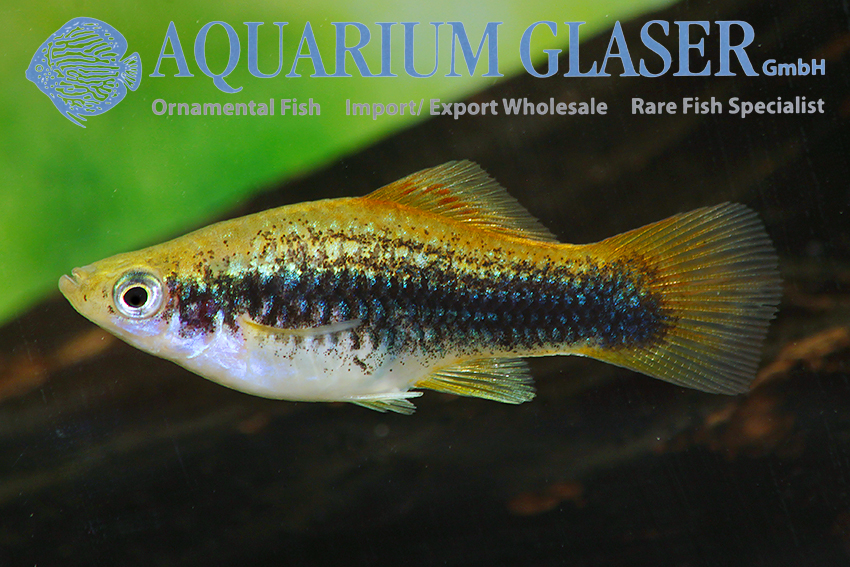
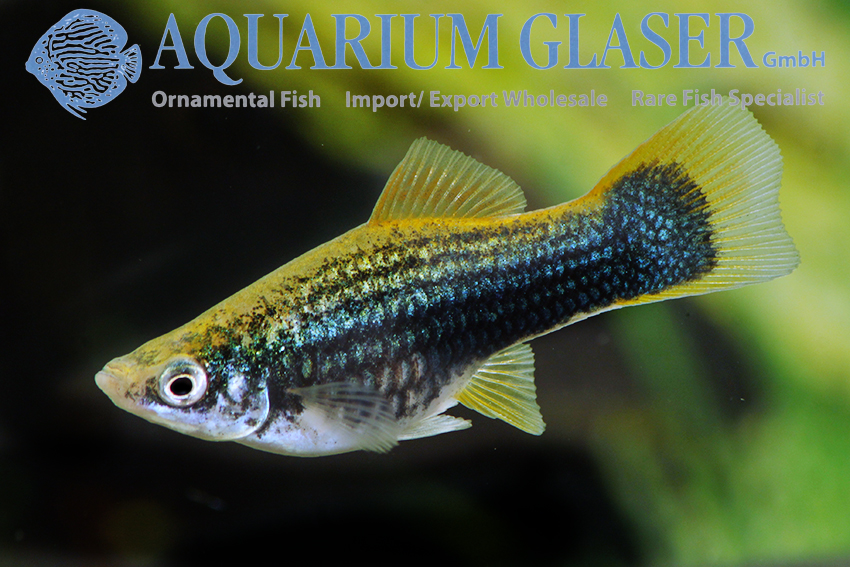
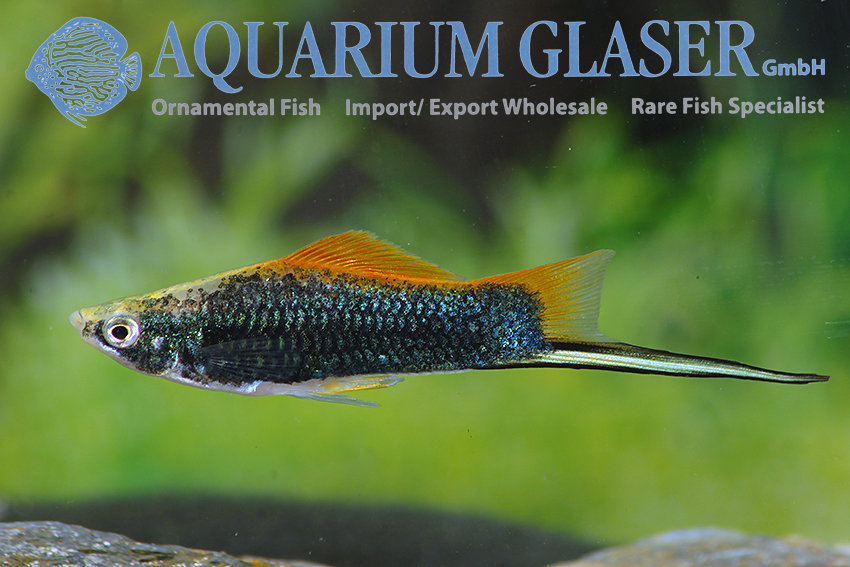
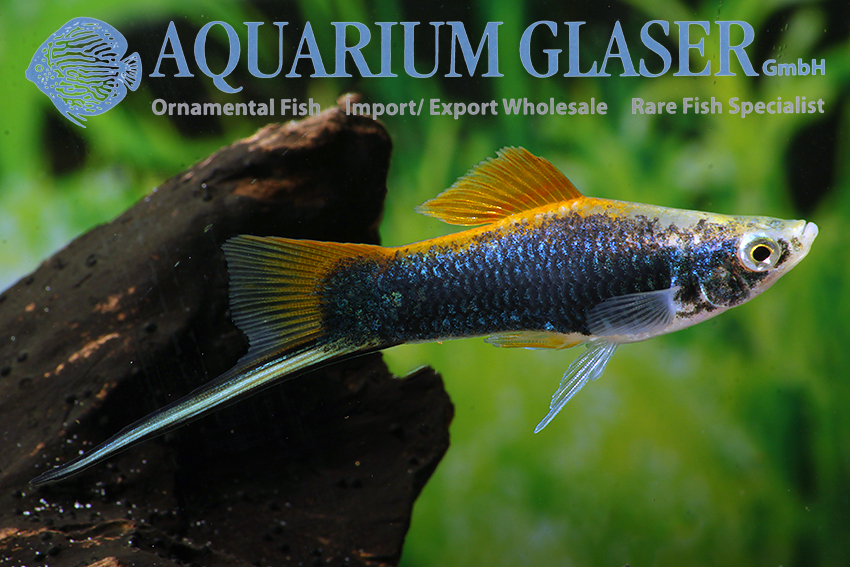
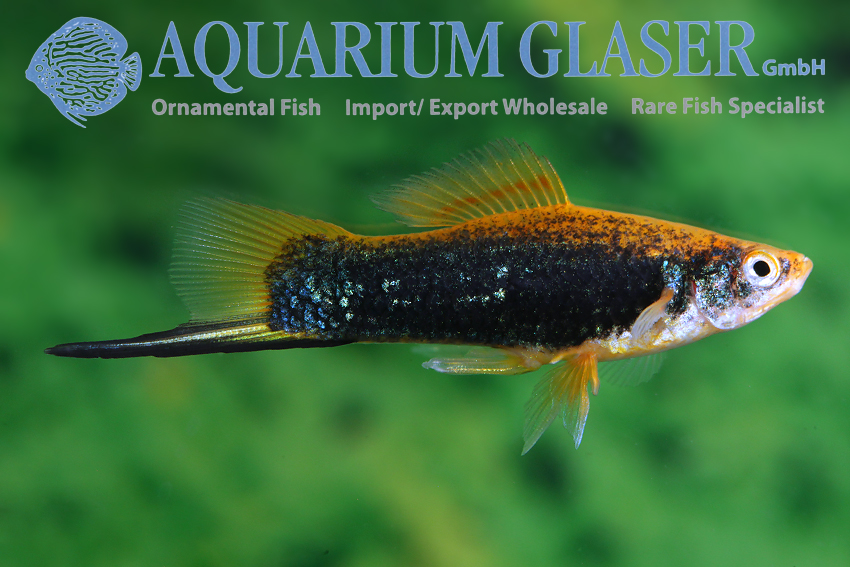
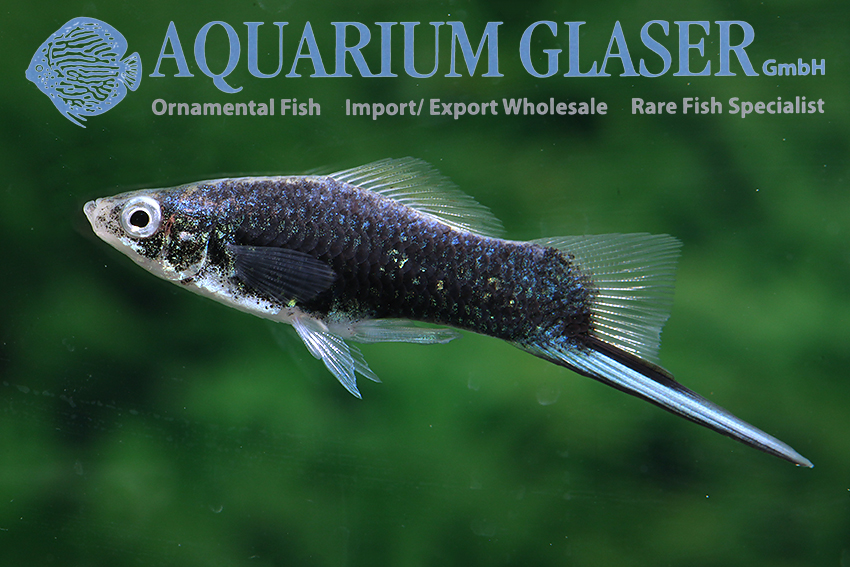
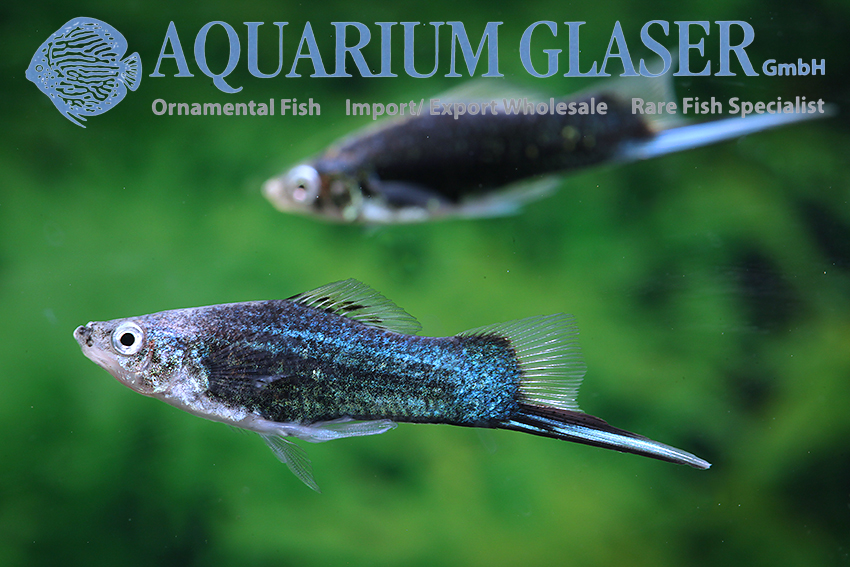
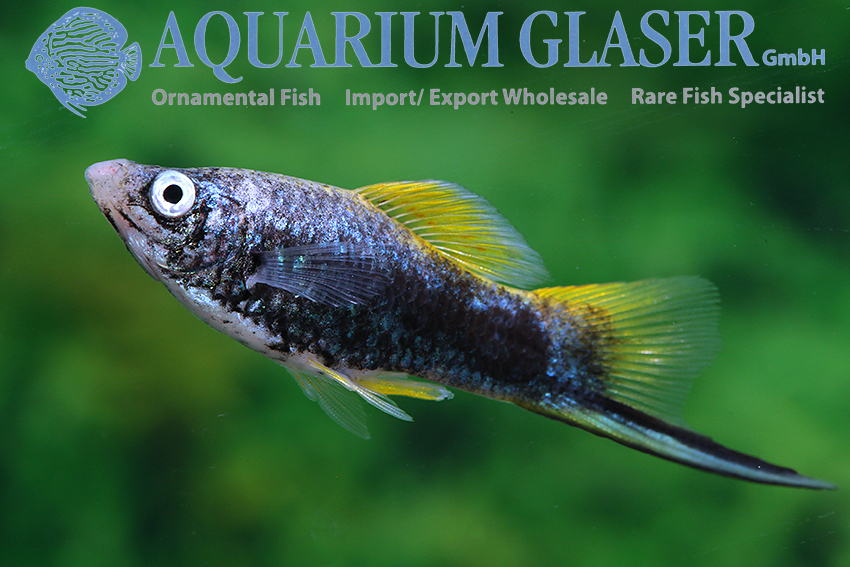
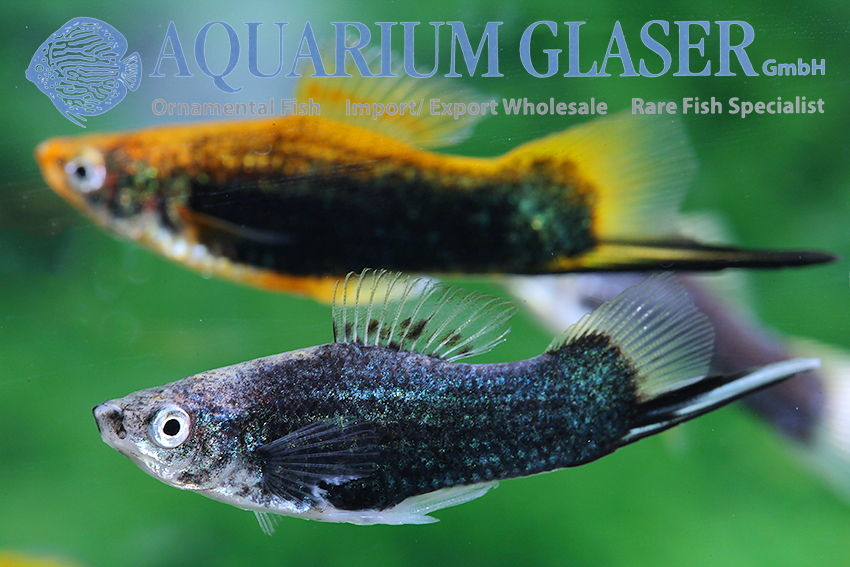
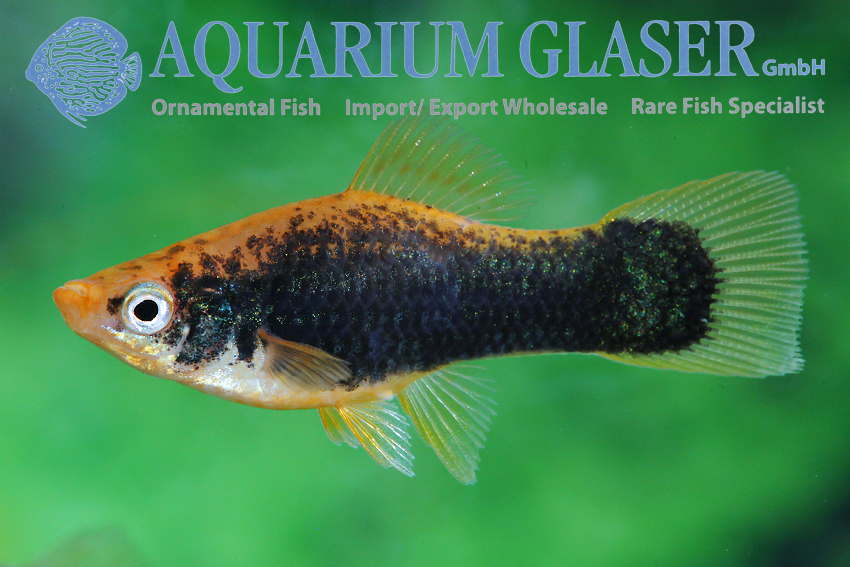
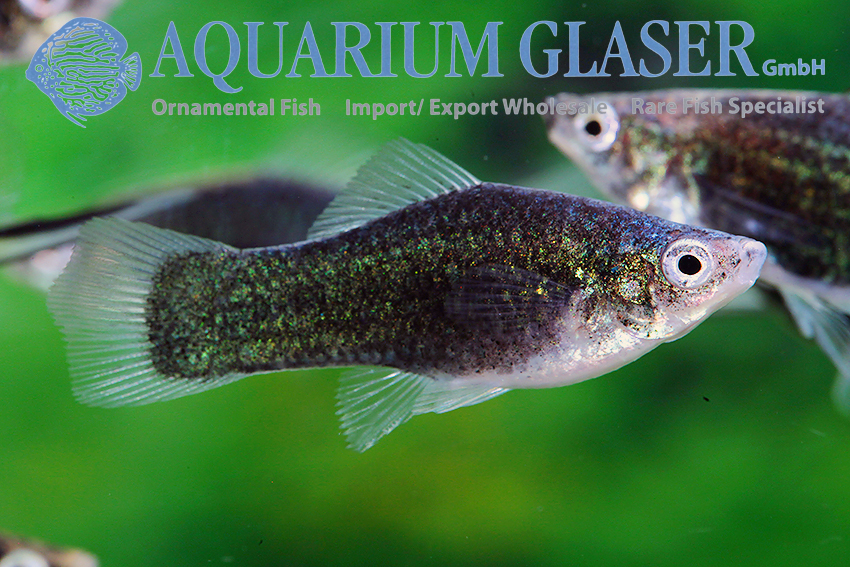
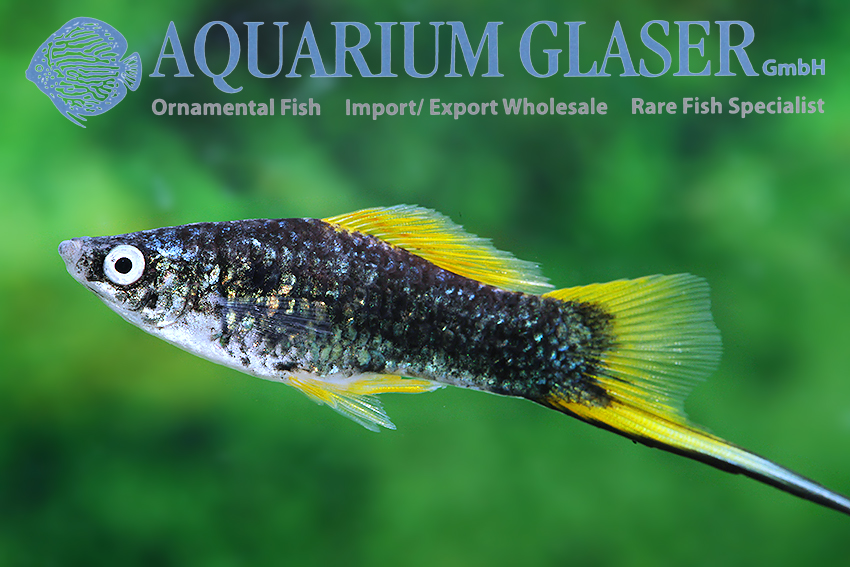
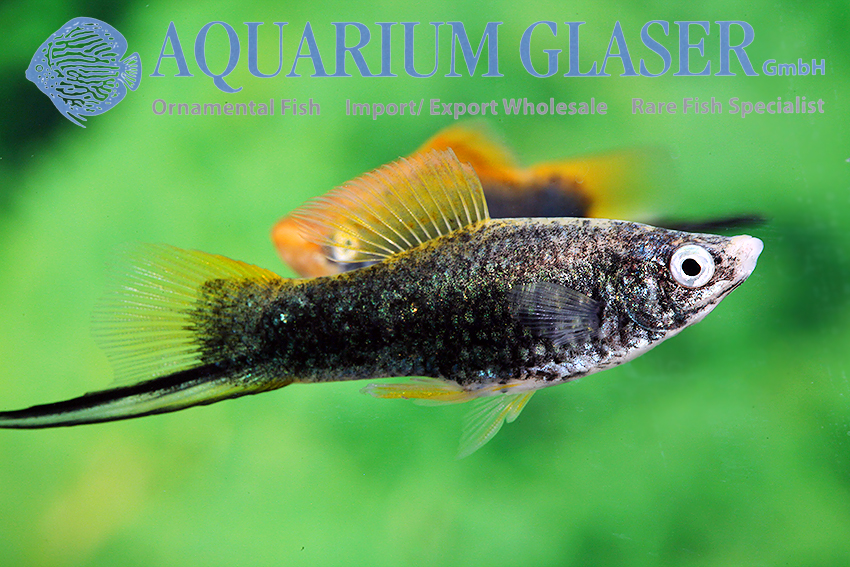
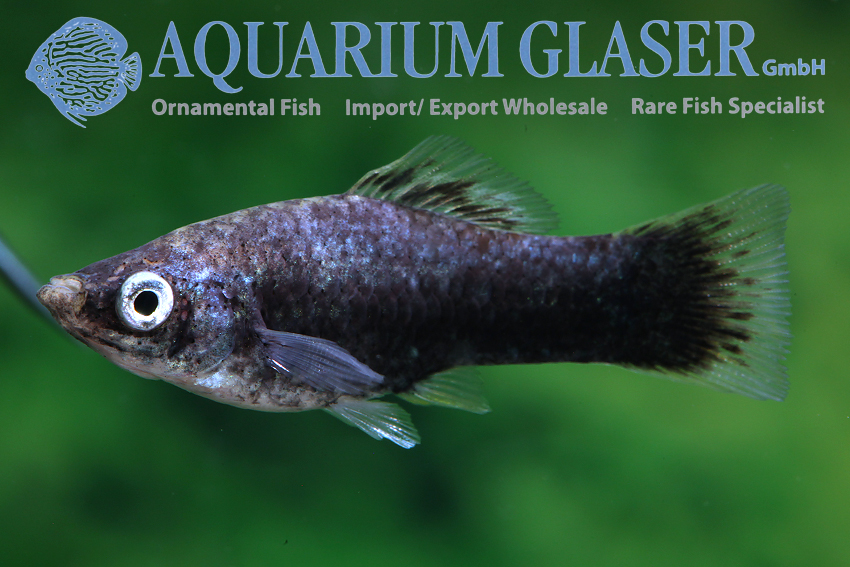
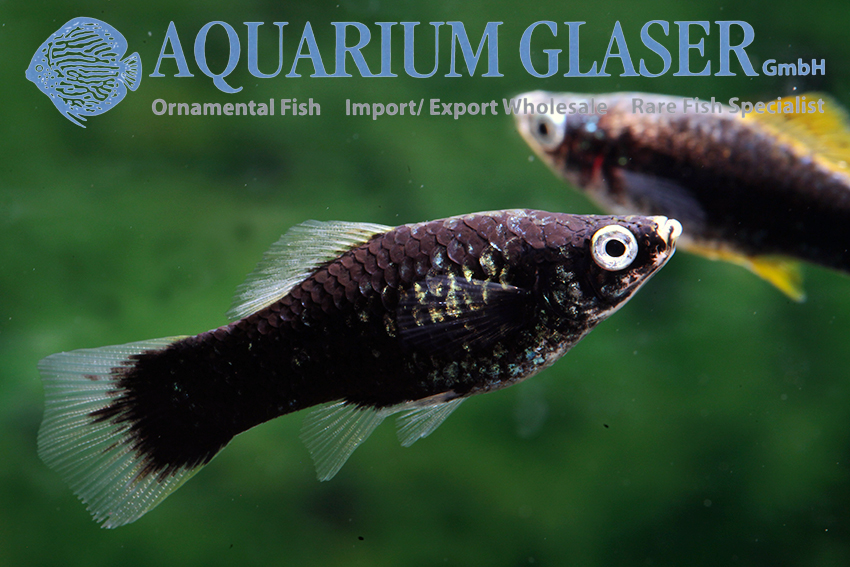
Hamburgers are black swordtails whose scales usually have a green or blue sheen (“mirror”). The black coloration can extend to the fins, but most specimens have red, yellow or transparent fins. Black swordtails are not homozygous, at least to our knowledge there have never been any reports of homozygous black swordtails. Even after 18 generations of strict inbreeding, in which only black animals were mated, there are still red and green fish among the young of a black pair (D. Gentzsch in Das Aquarium, 1995, issue 309: 13-16).
Because it used to be believed that inbreeding was harmful in general and especially in the case of black swordtails, the doctrine that hamburgers should always be bred by crossing a black animal with other color forms applied until the end of the last millennium. Today’s black swordtails are correspondingly inconsistent in terms of coloration. Today, however, it has been proven that inbreeding in fish is generally harmless. Of course, there are also hereditary diseases in fish that can be exacerbated by inbreeding, but a good breeder can avoid such pitfalls by making the right breeding choices.
From an aquarium point of view, black swordtails are not only special in terms of color. They are relatively large swordtails, which should be kept in the largest possible aquarium in order to breed magnificent animals. Their preferred temperature is somewhat lower than that of many other X. hellerii; experienced breeders recommend 18-22°C. In addition, the late males of the black swordtails only become sexually mature really late (often only at around one year of age) (early males at around 3-4 months). Before that, they largely look like females, which has led to the myth of the sex change in swordtails. The sex ratio in litters is approx. 50:50. Black swordtails are not as fertile as many other X. hellerii, in which litters of large females can easily produce 150 young or more. Black swordtail females only produce a third of this number or less and do not become so bulky when they are about to spawn.
For our customers: black swordtails have code 420401 (small) to 420405 (show size) on our stocklist. Please note that we only supply the wholesale trade.
Text & photos: Frank Schäfer




